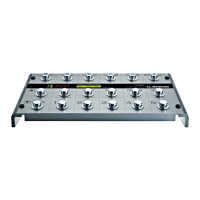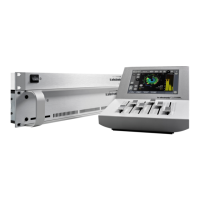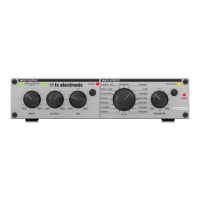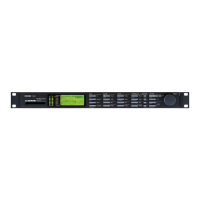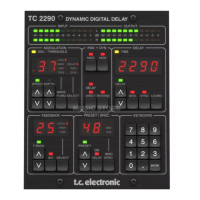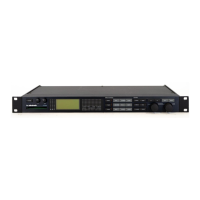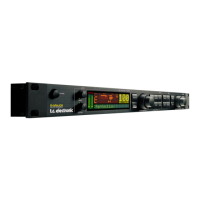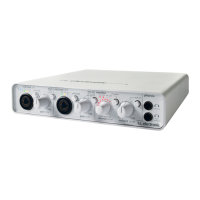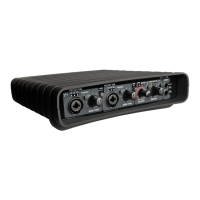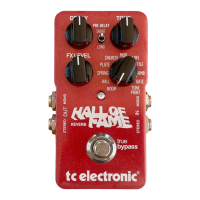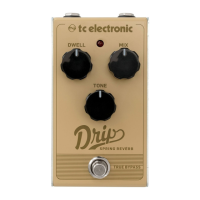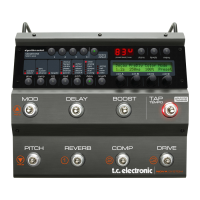
Do you have a question about the TC Electronic NOVA System and is the answer not in the manual?
| Product color | Black |
|---|---|
| MIDI in | Yes |
Essential guidelines for safe operation, cleaning, and placement of the apparatus to prevent hazards.
Instructions on proper grounding, plug usage, and avoiding electrical shock risks.
Information regarding when and how to refer the apparatus for servicing by qualified personnel.
Details on the equipment's compliance with FCC rules for Class B digital devices and interference mitigation.
Declaration of product conformity to safety and electromagnetic compatibility standards.
Describes the NOVA System as an all-in-one floor-based effects solution with analog drive technology.
Explains the unique analog distortion/overdrive circuit with digital control for enhanced flexibility.
Identifies and explains the function of the front panel buttons, encoders, and display elements.
How to edit effects, manage variations, and use factory defaults.
Covers storing presets, using the tuner, and understanding effect status LEDs.
Details on activating individual effect blocks and navigating preset banks.
Description of Drive input, Line input, and Balanced Outputs (1/4" TRS).
Details on S/PDIF, MIDI In/Thru/Out, and Pedal Input connections.
Specifies the power supply requirements and voltage compatibility.
Connecting the NOVA System for a basic setup with one combo amp and optional G-Switch.
Using the NOVA System within an amplifier's effects loop for drive and real-time control.
Explains the three routing methods: Serial, Semi Parallel, and Parallel.
Details the 'in a straight line' connection of effect blocks for serial routing.
Describes parallel connections for reverb/delay and simultaneous signal feeding.
Covers setting volume, input gain, output levels, and clipping indications.
Choosing inputs (Drive/Line) and defining volume control position (Pre/Post).
Covers advanced level parameters, boost function, and digital input gain.
Details on dither settings and selecting input sources (Analog/Digital).
How to connect expression or G-Switch pedals and assign parameters.
Adjusting Min, Mid, and Max parameters to define pedal response.
Configuring master settings, pedal types, and calibrating expression pedals.
Configuring FX Mute, Tap Master modes, and various lock functions.
Settings for speaker simulation and configuring footswitch operation (Pedal/Preset).
Clearing system settings to factory defaults and using the G-Switch.
How to activate the tuner, set tuner output (Mute/On), and reference frequency.
Understanding the display for notes that are too high, too low, or in tune.
Configuring MIDI channel, program change reception, and output.
Mapping MIDI program changes to presets and performing system data dumps.
Using MIDI clock for tempo synchronization with external sequencers.
Mapping MIDI CC numbers for controlling effects on/off, tempo, and expression pedal.
How to recall presets based on the selected mode (Preset or Pedal).
Entering edit mode, selecting effects, enabling/disabling, and exiting without saving.
Explains the two methods for storing presets: Quick Store and Normal Store.
Procedure for deleting presets from the User bank.
Details on Gain, Tone, Level, and Boost Level for the Overdrive effect.
Details on Gain, Tone, Level, and Boost Level for the Distortion effect.
Overview of compressor function, types, and detailed explanation of Threshold, Ratio, Attack, Release.
Parameters for Sustaining and Percussive types: Drive, Response, and Level.
Details on EQ Freq, Gain, Width, and Noise Gate parameters like Threshold, Damp, Release.
Setting Noise Gate mode (Hard/Soft) and adjusting Threshold, Damp, and Release parameters.
Explanation of the phaser effect and its core parameters: Speed, Tempo, Depth, and Range.
Controlling feedback (FeedB) and the mix between dry and effected signals.
Overview of tremolo effect, Speed, Tempo, Depth, and Type (Soft/Hard).
Adjusting waveform pulsewidth and attenuating high frequencies with Hi-Cut.
Explanation of the panner effect for stereo perspective and its Speed parameter.
Configuring tempo synchronization, effect depth, and dry/wet mix for the panner.
Overview of chorus effect, Speed, Tempo, and Depth parameters.
Adjusting high frequencies, delay length, and mix for the chorus effect.
Explanation of the flanger effect and its Speed, Tempo, and Depth parameters.
Controlling feedback, high-cut, delay times, and mix for the flanger effect.
Overview of vibrato effect, Speed, Tempo, and Depth parameters.
Using the Hi-Cut parameter to adjust high frequencies in the vibrato effect.
Details on Detune voices, delays, and mix for pitch offsetting.
Using expression pedals for pitch control, including Pitch, Direction, and Range.
Setting Octaver direction, range, and mix for added pitch voices.
Configuring pitch, stereo position, and delay for two voices in the pitch shifter.
Adjusting feedback, mix, and output level for the pitch shifter effect.
Setting key, scale, voice levels, panning, and delay for intelligent pitch shifting.
Configuring the overall mix and output level for the intelligent pitch shifter.
Lists available delay types: Clean, Analog, Tape, Ping Pong, Dynamic Delay, Dual Delay.
Explains Delay Time, Tempo, Feedback, LoCut, HiCut, and Mix parameters.
Drive parameter for Analog and Tape delays to simulate sonic characteristics.
Width for Ping Pong, and Offset for Dynamic Delay for stereo imaging.
Parameters Sense and Damp for dynamic delay, and Rel for release time.
Dual delay panning, and FX Mute spill-over settings for reverb and delay.
Introductions to Spring, Hall, Room, and Plate reverb algorithms.
Explains Decay, Pre Delay, Shape, Size, and Color parameters.
Variations for low and high frequency ranges (Hi Col/Lo Col, Hi Lev/Lo Lev).
Setting levels for early reflections, diffuse field, and controlling density.
Details on connectors, formats, sample rates, and impedance for inputs/outputs.
Information on operating temperature, humidity, MIDI, and pedal interfaces.
Specifications for the display, physical dimensions, weight, and mains voltage.
